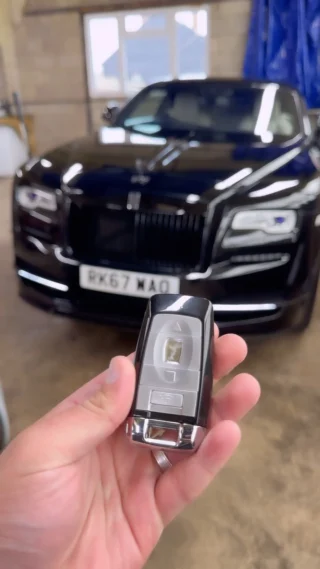This Is A Broken Key Repair Success Story You'll Never Believe
Broken Key Repair: Solutions for Common Lock Issues
Intro
Keys are necessary tools in our every day lives, allowing us to protect our homes, automobiles, and individual belongings. However, they can also break, resulting in aggravations and inconveniences. Understanding how to resolve broken key issues is crucial for anyone desiring to maintain their locks and make sure access to their home. This short article covers various aspects of broken key repair, consisting of typical causes, repair techniques, and preventive steps to avoid future circumstances.
Common Causes of Broken Keys
Keys can break for several reasons. Understanding these causes can assist in preventing future events:
- Wear and Tear: Over time, keys can wear down due to regular use, leading to weakened shafts that are most likely to break.
- Poor Key Design: Keys that are inadequately created may lack structural stability, making them more vulnerable to breaking under tension.
- Inaccurate Key Usage: Using extreme force to turn a key, especially in a jammed lock, can quickly lead to a damage.
- Environmental Factors: Extreme temperature levels or direct exposure to wetness can compromise metal keys, leading to brittleness.
- Lock Malfunctions: A malfunctioning lock can put unnecessary tension on a key, triggering it to snap throughout operation.
Indications of a Broken Key
Identifying a broken key often includes apparent signs. Here are some indications:
- Partial insertion into the lock: If the key can not be totally inserted or eliminated.
- Abrupt resistance: If the key feels stuck when being turned.
- Visible divides or fractures: Inspecting the key can reveal fractures or breaks in the metal.
- Incomplete engagement: The key might turn less than needed to actuate the lock.
Approaches for Broken Key Repair
When faced with a broken key, there are several techniques to consider for repair. It is necessary to pick the best one based on your specific circumstance.
1. Get Rid Of the Broken Key
If a key breaks within a lock, the very first action is to eliminate the broken portion:
- Use tweezers or needle-nose pliers: If a piece is protruding of the lock, gently pull it out.
- Place a key extractor tool: This specific tool can assist extract lodged parts more efficiently.
Tool
Finest Used For
Tweezers
Shallow extraction
Key extractor tool
Deeply lodged key pieces
Lube spray
Easing extraction of stuck parts
2. Superglue Method
For circumstances where a key has partly broken but is intact enough to remain grasped, the superglue strategy may use a temporary fix.
- Clean the broken surface areas thoroughly.
- Use a thin layer of superglue.
- Hold the pieces together for a couple of minutes till the glue sets.
Keep in mind: This method is not an irreversible service and must be utilized with care as the repair can quickly fail under operational stress.
3. Metal Epoxy
For a more robust repair, metal epoxy provides a stronger bond than superglue.
- Follow the instructions on the epoxy product packaging for preparing the adhesive.
- Apply to the broken area and hold till set (normally a couple of hours).
4. Duplicate the Key
In instances where lock performance is important, developing a duplicate key is often the finest route:
- Visit a locksmith: Many locksmith professionals can replicate keys rapidly and effectively.
- Utilize a key-tracing service: Some locksmiths use tracing approaches to cut a similar key based on the residues.
5. Lock Replacement
When keys repeatedly break, it may be due to lock concerns instead of key stability. In such cases:
- Consult a locksmith to evaluate the lock's condition.
- Consider changing the lock totally if substantial damage or wear appears.
Avoiding Key Breakage
Preventing key damage is frequently better than repair. Here are some practical ideas:
- Limit force on keys: Always turn keys carefully to avoid unneeded stress.
- Routine key assessment: Check for wear and change keys revealing signs of damage.
- Use a keychain: Prevent extreme bending by using a durable keychain.
- Lubricate locks: Ensure locks run smoothly to lower pressure on keys.
- Store keys effectively: Avoid placing type in environments that can trigger rust or corrosion.
FAQs About Broken Key Repair
1. Can I repair a broken key myself?
Yes, you can try to repair a broken key yourself utilizing methods like the superglue or metal epoxy methods. Nevertheless, these are short-term fixes, and it is advisable to speak with an expert locksmith for a more long lasting service.
2. Is it worth repairing a broken key?
In many cases, particularly with sentimental or distinct keys, a repair may deserve it. For standard keys, replication or replacement is generally more efficient and dependable.
3. How can I prevent my keys from breaking?
To avoid breakage, ensure that keys are exempt to extreme force, frequently examine them for wear, and keep locks well-maintained.
4. When should car key solutions look for a locksmith's assistance?
If you are not able to remove a broken key from a lock or if the lock breakdowns often, it's finest to look for a locksmith's competence.
Broken keys can provide a substantial inconvenience, however they are workable with the ideal approach. By understanding the common causes and offered repair approaches, people can react effectively to key damage. Drawing from preventive steps will likewise help maintain key stability and performance. Ultimately, a proactive technique to key and lock upkeep can significantly lower the frequency of these bothersome concerns.
